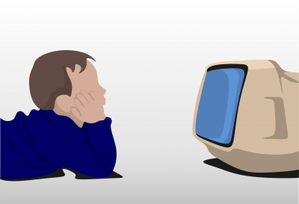Health
Prolonged sitting, screen use to cause myopia in every 3rd Indian kid by 2030: Doctors

New Delhi, May 14
As many as one-third of all children in urban India aged 5-15 years are expected to suffer from myopia by 2030, eye doctors said, as a result of increased sedentary lifestyle and prolonged use of screens.
Myopia, commonly known as near-sightedness, is a condition where objects are clear, but those farther away appear blurred.
It has become a significant public health issue worldwide with one in every two individuals being myopic as early as 2050, with a rising prevalence among children and young adults.
Myopia rates are indeed rising globally, including in India, there is evidence suggesting a significant increase in myopia prevalence among urban children in India, said the experts as part of the ongoing Myopia Awareness Week.
Studies show that in the 20-year period from 1999 to 2019, the incidence of myopia among urban children has tripled in India, from 4.44 per cent to 21.15 per cent, respectively.
"We have been witnessing a steady increase in the number of myopia cases in urban children over the last few years. Our predictions, based on the slope of 0.8 per cent every year, indicate that the prevalence of myopia among urban children will increase to 31.89 per cent in 2030, 40 per cent in 2040 and 48.1 per cent in 2050. This means that one out of every two children in India will be suffering from myopia in the next 25 years, up from one in four currently," Smit M Bavariya, Cataract Surgeon with Dr. Agarwals Eye Hospital, Thane, Mumbai, told IANS.
"Indeed, myopia is becoming more common in India, especially among the urban population. This tendency has been confirmed by a number of studies and reports, which show that myopia has become more common among kids and teenagers in recent years," added Mahipal Singh Sachdev, Chairman and Managing Director, Center for Sight, New Delhi.
The symptoms include blurry vision, difficulty seeing distant objects, eye strain, headaches, and fatigue -- particularly after prolonged screen use. The experts noted that a sedentary lifestyle, prolonged screen usage, and reduced outdoor activities are contributing to the rapid rise in myopia cases in children.
"Excessive screen time stimulates the eyes, retina, and brain of children, leading to accelerated myopic changes due to rapid eyeball growth," Smit said. A lack of exposure to essential natural light due to being indoors also affects eye health, Mahipal told IANS.
The experts also blamed changes in lifestyle brought about by urbanisation, including an increase in near-work activities like studying, reading, and extended durations of near-work caused by demanding academic contexts in metropolitan locations.
"Genetic predisposition also matters; it's possible that urban populations have a higher prevalence of genetic risk factors linked to myopia. These all factors put a lot of pressure and strain to our eyes, retina and nerves, as a result of which the incidences are gradually rising," Mahipal said.
To tackle the rising health issue, the experts called for public health initiatives, education campaigns, lifestyle adjustments, and enhanced access to eye care services.
"Recognising the symptoms of myopia in children is important for early intervention. While the condition cannot be cured, it can be helped with glasses or contact lenses,” said Smit, calling for regular eye check-ups and encouraging children for outdoor activities.



































